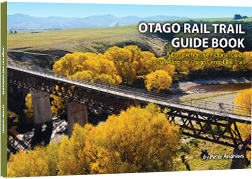As with every outdoor activity, there is always the possibility of having an accident.
While the Rail Trail is a very safe environment, much of it is very isolated, with a low population, and this factor must be considered when planning your journey. While cell phone coverage has been upgraded, there will be blank spots on the Trail.
It may take some time to cycle to an area where there is coverage (possibly 30 minutes). There are doctors at Ranfurly, Alexandra and Clyde and hospitals at Ranfurly and Clyde.
A St Johns Ambulance Service operates from Alexandra and Ranfurly. Police are stationed at Middlemarch, Ranfurly, Omakau, Alexandra and Clyde.
Make sure you carry a First Aid kit. Access to main highways is easy from most parts of the Trail.










